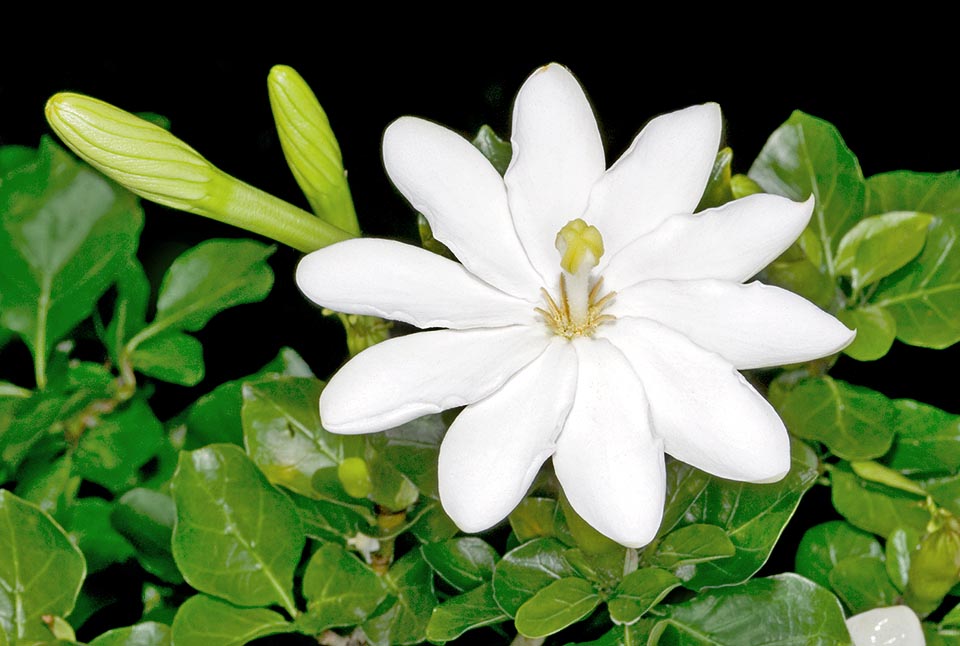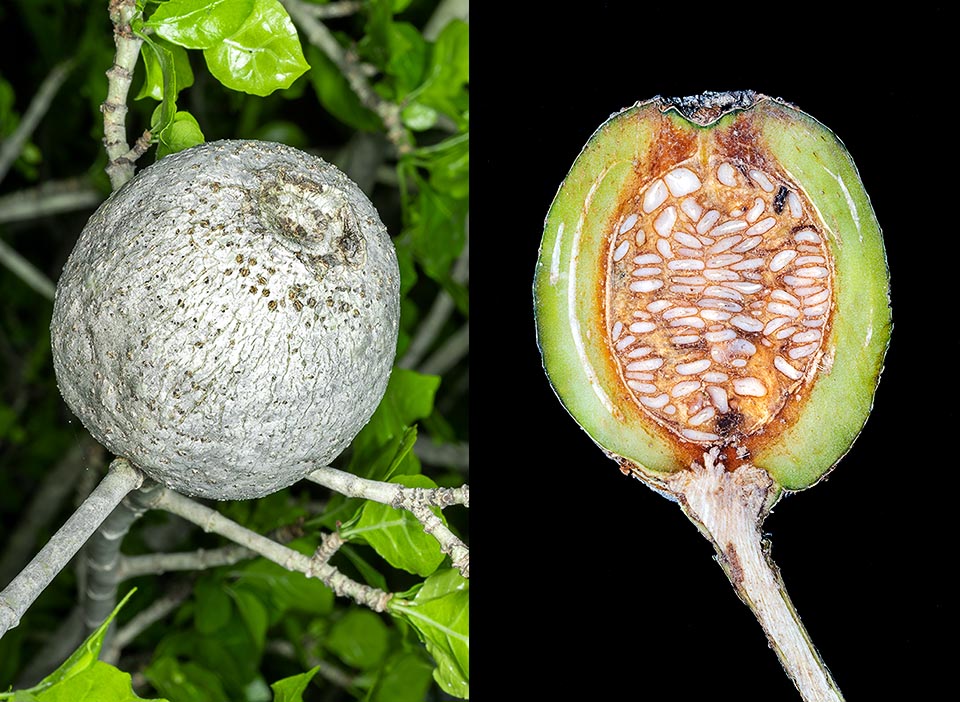Family : Rubiaceae

Text © Pietro Puccio

English translation by Mario Beltramini

Gardenia thunbergia is a Cape Provinces and Natal shrub. Can be 5 m tall. Very scented 10 cm flowers, with 8-10 partly overlapped petals © Giuseppe Mazza
The Gardenia thunbergia Thunb. (1780) is native to Mozambique and South Africa (Cape Provinces and Natal).
The genus is honoured to the Scottish physician and naturalist Alexander Garden (1730-1791), who spent a good part of his life in South Carolina, studying the local flora and fauna; the name of the species was given by Linnaeus filius (1741-1783) in honour to Karl Pehr Thunberg (1743-1828), Swedish physician and botanist.
Common names: “starry gardenia”, “Thunberg’s gardenia”, “white gardenia”, “forest gardenia”, “wild gardenia” (English); “gardène de Thunberg” (French); “jazmin estrellado” (Spanish); “Afrikanische Wald-gardenie”, “Weisse Gardenie” (German); “gardenia branca” (Portuguese).
Shrub or evergreen small tree, tall up to about 5 metres, with whitish stems and virticillate leaves (3-4 per each knot), with wavy margins, with a usually ovate shape and of rather variable dimensions, up to about 15 cm of length and 6 of breadth, of a glossy intense green colour.

Indehiscent fruit and section with gastric juices resistant seeds. Hard and woody, is appetized by elephants, big antelopes and buffaloes who disperse them in the savannah © Giuseppe Mazza
The flowers, solitary and terminal, are intensely perfumed, about 10 cm wide, with 8-10 partially superposed petals, of a white colour tending to the cream yellow, on a corolla tube long up to about 12 cm. The fruits are woody and extremely hard, ovoid, 7-8 cm long, of greyish colour, persistent on the plant for long time, containing many flat and woody seeds. It reproduces by seed and cutting.
Much appreciated plant, in spite of its slow growth, due to its large perfumed flowers; can be cultivated in the tropical, subtropical and warm temperate areas, in full sun or partial shade, which temperatures which are not to go down under the -3 °C. The soil must be well drained and, although it prefers rich and rather acid grounds, is less particular than other plants of Gardenia, so much to be utilized at times as rootstock for these last ones. The roots and leaves are utilized in the original countries in the traditional medicine and the wood, particularly hard, for small handicrafts.
Synonyms: Gardenia verticillata Lam. (1788); Caquepiria bergkia J.F.Gmel. (1791); Gardenia speciosa Salisb. (1796); Gardenia crassicaulis Salisb. (1807); Gardenia appendiculata Stokes (1812); Gardenia medicinalis Vahl ex Schumach. & Thonn. (1827); Gardenia macrocarpa Carey ex Voigt (1845); Genipa thunbergia (Thunb.) Baill. (1880); Warneria thunbergia (Thunb.) Stuntz (1914).
→ To appreciate the biodiversity within the RUBIACEAE family please click here.
